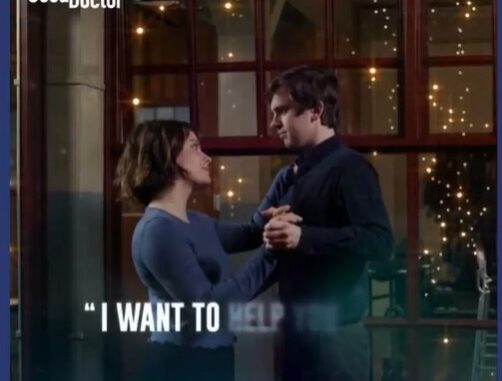
When a deadly airborne virus transforms St. Bonaventure Hospital into a quarantine zone, “The Good Doctor” delivers one of television’s most gripping explorations of crisis medicine. The two-part quarantine episode stands as a masterclass in sustained tension, character development under pressure, and the redefinition of heroism through the unique perspective of Dr. Shaun Murphy.
The sequence begins with chilling efficiency: a patient’s mysterious symptoms, the recognition of viral contamination, and the mechanical sealing of hospital doors—a visual metaphor for how quickly normal medical practice can transform into crisis management. As the reality of quarantine settles over the hospital staff, director Mike Listo employs claustrophobic framing and increasingly desaturated color grading to create a palpable sense of isolation and growing danger.
What distinguishes this episode from conventional medical disaster narratives is its focus on the particular challenges Shaun faces when environmental conditions become overwhelming. As alarms blare, patients deteriorate, and sensory stimulation intensifies beyond tolerable levels, Shaun experiences sensory overload—a reality of autism often oversimplified in media portrayals. Rather than minimizing this experience, the episode places it center stage, allowing viewers unprecedented insight into how crisis affects different neurological profiles in unique ways.

The quarantine episode also brilliantly explores how crisis reveals character through parallel storylines across the hospital. Dr. Morgan Reznick’s evolution from competitive individualist to collaborative team member unfolds alongside Dr. Claire Browne’s growth beyond emotional caution. Meanwhile, Dr. Neil Melendez confronts the limitations of authority when standard hierarchies prove insufficient for unprecedented challenges. These interweaving narratives suggest that heroism takes diverse forms depending on individual strengths and limitations.
The visual storytelling reaches its peak when Shaun, having regained his equilibrium through appropriate accommodation, identifies a solution to the most critical patient case. The camera work during this sequence is remarkable—starting with disorienting movement that reflects earlier overwhelm, then steadying as Shaun’s thought process clarifies, finally achieving fluid precision as he implements his solution. This visual journey mirrors Shaun’s internal experience from chaos to clarity.
What makes the quarantine episode particularly affecting is its refusal to present disability as something to be “overcome” in crisis. Instead, it suggests that different cognitive profiles offer unique advantages in emergency situations. Shaun’s pattern recognition abilities and capacity for hyper-focus—aspects of his neurology often presented as challenges in other contexts—become life-saving assets when conventional approaches fail. This represents a revolutionary perspective in medical drama: the suggestion that neurodiversity might sometimes provide crucial advantages rather than obstacles.
The episode’s most poignant moment occurs when Shaun successfully performs a critical procedure despite continuing sensory challenges. “I can’t make the noise stop,” he explains to a colleague, “so I have to work with it.” This simple statement encapsulates the show’s nuanced approach to disability—acknowledging real challenges while refusing to define characters solely through those challenges. Shaun doesn’t triumph by becoming less autistic in crisis; he succeeds by finding pathways forward that accommodate his specific neurology.
